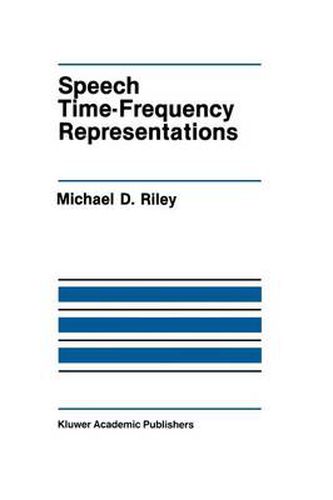Readings Newsletter
Become a Readings Member to make your shopping experience even easier.
Sign in or sign up for free!
You’re not far away from qualifying for FREE standard shipping within Australia
You’ve qualified for FREE standard shipping within Australia
The cart is loading…






This title is printed to order. This book may have been self-published. If so, we cannot guarantee the quality of the content. In the main most books will have gone through the editing process however some may not. We therefore suggest that you be aware of this before ordering this book. If in doubt check either the author or publisher’s details as we are unable to accept any returns unless they are faulty. Please contact us if you have any questions.
1.1. Steps in the initial auditory processing. 4 2 THE TIME-FREQUENCY ENERGY REPRESENTATION 2.1. Short-time spectrum of a steady-state Iii. 9 2.2. Smoothed short-time spectra. 9 2.3. Short-time spectra of linear chirps. 13 2.4. Short-time spectra of /w /‘s. 15 2.5. Wide band spectrograms of /w /’s. 16 Spectrograms of rapid formant motion. 2.6. 17 2.7. Wigner distribution and spectrogram. 21 2.8. Wigner distribution and spectrogram of cos wot. 23 2.9. Concentration ellipses for transform kernels. 28 2.10. Concentration ellipses for complementary kernels. 42 42 2.11. Directional transforms for a linear chirp. 47 2.12. Spectrograms of /wioi/ with different window sizes. 2.13. Wigner distribution of /wioi/. 49 2.14. Time-frequency autocorrelation function of /wioi/. 49 2.15. Gaussian transform of Iwioi/. 50 2.16. Directional transforms of lwioi/. 52 3 TIME-FREQUENCY FILTERING 3.1. Recovering the transfer function by filtering. 57 3.2. Estimating 'aliased’ transfer function. 61 3.3. T-F autocorrelation function of an impulse train. 70 3.4. T-F autocorrelation function of LTI filter output. 70 Windowing recovers transfer function. 3.5. 72 3.6. Shearing the time-frequency autocorrelation function. 75 3.7. T-F autocorrelation function for FM filter. 76 3.8. T-F autocorrelation function of FM filter output. 77 3.9. Windowing recovers transfer function. 79 4 THE SCHEMATIC SPECTROGRAM Problems with pole-fitting approach.
$9.00 standard shipping within Australia
FREE standard shipping within Australia for orders over $100.00
Express & International shipping calculated at checkout
This title is printed to order. This book may have been self-published. If so, we cannot guarantee the quality of the content. In the main most books will have gone through the editing process however some may not. We therefore suggest that you be aware of this before ordering this book. If in doubt check either the author or publisher’s details as we are unable to accept any returns unless they are faulty. Please contact us if you have any questions.
1.1. Steps in the initial auditory processing. 4 2 THE TIME-FREQUENCY ENERGY REPRESENTATION 2.1. Short-time spectrum of a steady-state Iii. 9 2.2. Smoothed short-time spectra. 9 2.3. Short-time spectra of linear chirps. 13 2.4. Short-time spectra of /w /‘s. 15 2.5. Wide band spectrograms of /w /’s. 16 Spectrograms of rapid formant motion. 2.6. 17 2.7. Wigner distribution and spectrogram. 21 2.8. Wigner distribution and spectrogram of cos wot. 23 2.9. Concentration ellipses for transform kernels. 28 2.10. Concentration ellipses for complementary kernels. 42 42 2.11. Directional transforms for a linear chirp. 47 2.12. Spectrograms of /wioi/ with different window sizes. 2.13. Wigner distribution of /wioi/. 49 2.14. Time-frequency autocorrelation function of /wioi/. 49 2.15. Gaussian transform of Iwioi/. 50 2.16. Directional transforms of lwioi/. 52 3 TIME-FREQUENCY FILTERING 3.1. Recovering the transfer function by filtering. 57 3.2. Estimating 'aliased’ transfer function. 61 3.3. T-F autocorrelation function of an impulse train. 70 3.4. T-F autocorrelation function of LTI filter output. 70 Windowing recovers transfer function. 3.5. 72 3.6. Shearing the time-frequency autocorrelation function. 75 3.7. T-F autocorrelation function for FM filter. 76 3.8. T-F autocorrelation function of FM filter output. 77 3.9. Windowing recovers transfer function. 79 4 THE SCHEMATIC SPECTROGRAM Problems with pole-fitting approach.